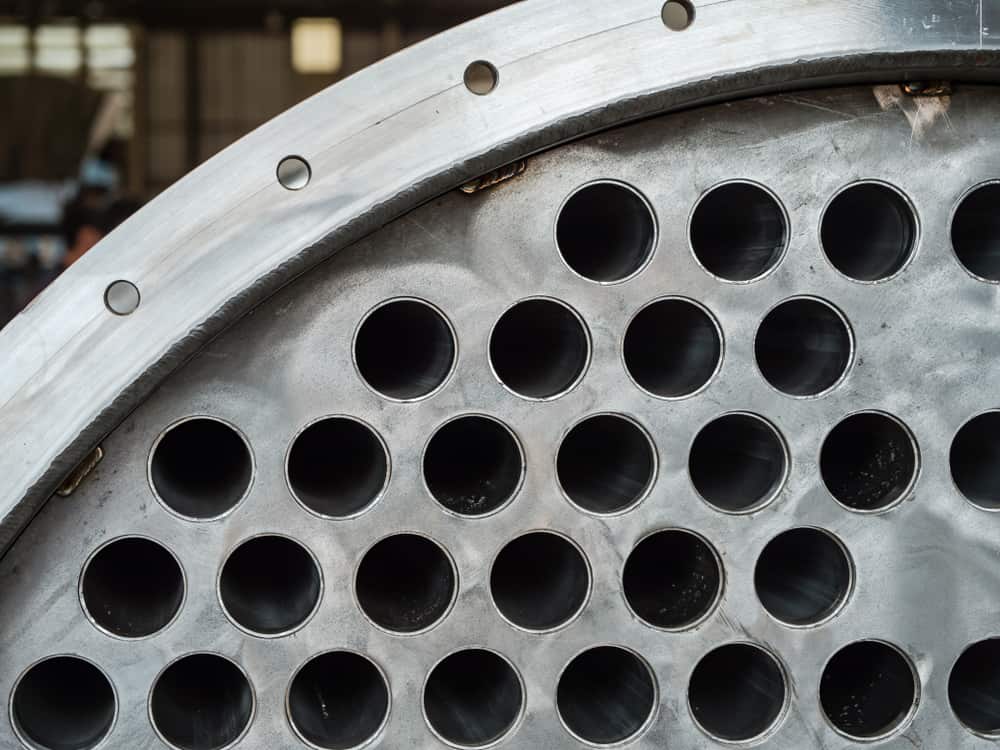
The various grades of stainless steel are known for their excellent corrosion resistance, mechanical properties, and smooth surface finishes. These properties are attributable to the composition of stainless steel, which contains chromium, nickel, carbon, and other alloying elements. Depending on its composition variation, stainless steel offers several grades to suit different production needs.
316 and 316L stainless steel are distinguished based on their carbon and molybdenum content and associated attributes. Compared to the 304 families of stainless steel, 316/316L grades deliver more corrosion-resistant features. In this article, we will explore these 316L vs 316 stainless steel grades and discuss their differences.
316 and 316L Stainless Steel
316 Stainless Steel
Grade 316 is an austenitic stainless steel composed primarily of chromium, nickel, carbon, and molybdenum. The presence of molybdenum (usually between 2% to 3%) enhances the corrosion resistance of 316 stainless steel and makes it the preferred choice for most industrial applications, second only to 304 stainless steel. Molybdenum is also responsible for improving the mechanical strength of stainless steel. As a result, 316 stainless steel is used in refineries or chemical plants where corrosive environments can present a potential issue, as well as for fabricating jet engine parts or heat exchangers.
| C | Mn | Si | P | S | Cr | Mo | Ni |
| 0-0.07 | 0-2.00 | 0-1.00 | 0-0.05 | 0-0.02 | 16.50-18.50 | 2.00-2.50 | 10.00-13.00 |
316L Stainless Steel
The 316L stainless steel is the “low-carbon version” of the 316 stainless steel, with carbon content below 0.03%. The lower carbon content reduces the amount of carbide precipitates released in the grain boundaries due to heat. The reduced risk of sensitization means that the 316L stainless steel ensures maximum corrosion resistance compared to the 316 grade during welding.
| C | Mn | Si | P | S | Cr | Mo | Ni |
| 0-0.03 | 0-2.00 | 0-1.00 | 0-0.05 | 0-0.02 | 16.50-18.50 | 2.00-2.50 | 10.00-13.00 |
316L vs 316 Stainless Steel: The Comparison
Both 316L and 316 grade stainless steel exhibit similarities in terms of strength requirements and other mechanical properties. But there are fundamental differences between the two, as described below:
| Properties | 316L vs 316 Stainless Steel |
| Corrosion resistance | 316L stainless steel exhibits better intergranular corrosion resistance than 316 stainless steel due to its reduced carbon presence. |
| Weldability | The 316 grade is more susceptible to weld decay; thus, 316L is usually desired for projects requiring welding. The lower carbon aids in reducing the carbide precipitates along the grain boundaries during welding. |
| Temperature resistance | Both types, 316 and 316L stainless steel, are resistant to high temperatures. |
| Magnetism | 316 stainless steel is practically paramagnetic due to its austenitic crystal structure. 316L stainless steel, although similar in properties, has the capability of gaining magnetism. |
| Cost | Both 316L and 316 stainless steels are priced similarly. |
| Applications | Both stainless steels are used primarily in the chemical, pharma, food-grade, or similar industries where the resistance to heat and chemical is desired. This includes the construction of heat exchangers, jet engine parts, and exhaust manifolds. |
Welding 316 and 316L Stainless Steel
Similar to other austenitic stainless steel grades, the 316 and 316L grades can be welded using an arc welding process such as TIG (Tungsten Inert Gas). However, they are susceptible to various issues like hot cracking or loss of corrosion resistance. To accommodate this, the filler metal used during welding should provide for the additional Molybdenum to match with the base metal for corrosive working environments. Additionally, high-purity argon can be used for shielding to prevent oxidation and loss of corrosion resistance at the weld root.
Achieving the best result from 316 and 316L stainless steel require welders to understand their properties and changes when subjected to processes like welding. By understanding the difference between 316L vs 316 grades, manufacturers can ensure the strength of their application materials and optimal corrosion and temperature resistance.
Arc Machines, Inc. provides a range of welding technologies for welding a variety of stainless steel grades. For product inquiries and to discuss any further questions concerning 316L vs 316 stainless steel, contact sales@arcmachines.com. To develop a custom solution, contact us to arrange a meeting.




